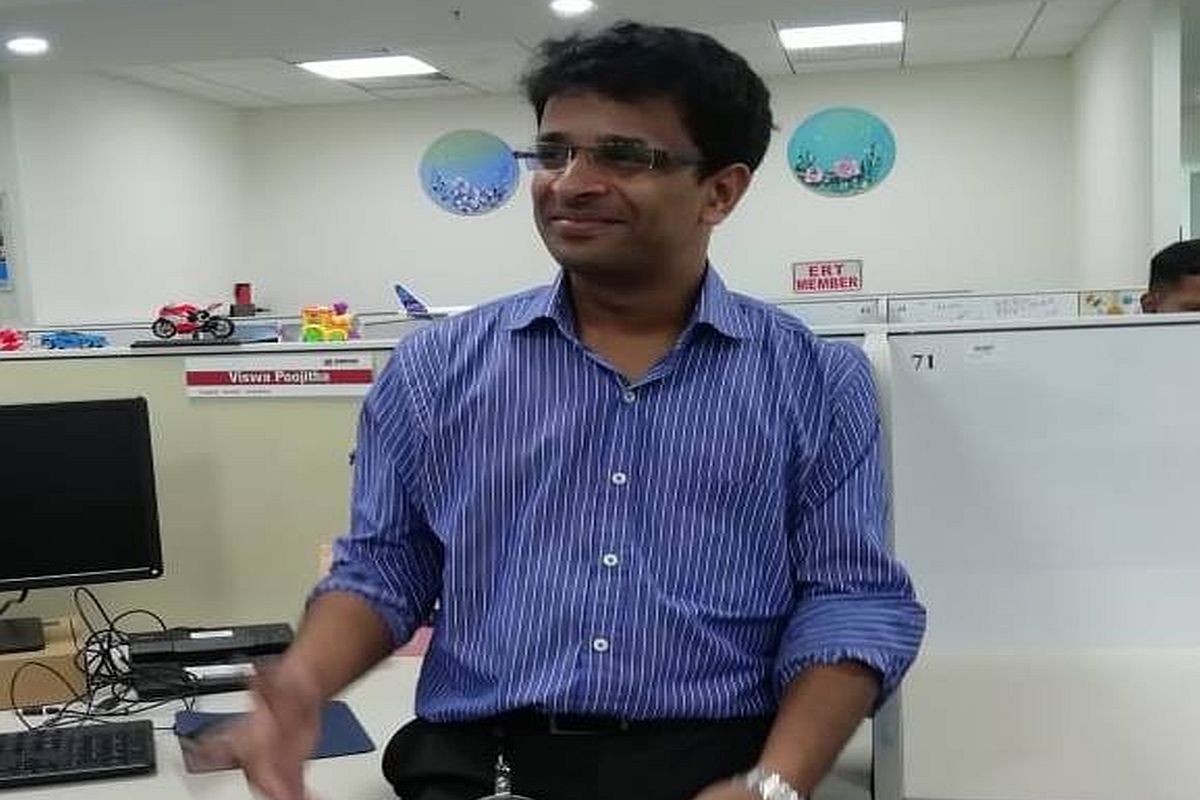NASA mission touches down on Moon aboard Firefly Aerospace lander
The data captured could also benefit humans on Earth by providing insights into how space weather and other cosmic forces impact Earth.
Shanmuga Subramanian said he had launched a separate search of his own and had taken it up as a challenge after NASA had given up.

Subramanian, who works as an information technology architect, in his spare time looked through the images taken by NASA's Lunar Reconnaissance Orbiter (LRO) camera on September 17 and spotted a debris from Vikram. (Photo: Facebook | Shanmuga Subramanian)
Chennai-based computer programmer and mechanical engineer Shanmuga Subramanian has been credited by NASA for the discovery of Chandrayaan-2 lander Vikram after its hard-landing on the moon’s surface.
The techie said he had launched a separate search of his own and had taken it up as a challenge after NASA had given up.
Advertisement
Subramanian, who works as an information technology architect, in his spare time looked through the images taken by NASA’s Lunar Reconnaissance Orbiter (LRO) camera on September 17 and spotted debris from Vikram.
Advertisement
The National Aeronautics and Space Administration (NASA) early on Tuesday said that its Lunar Reconnaissance Orbiter (LRO) Camera has sighted the remains of Vikram lander on the lunar surface. NASA’s confirmation came after an Indian computer programmer Shanmuga Subramanian contacted NASA’s project after which, the American space agency confirmed the identification by comparing before and after images.
Is this Vikram lander? (1 km from the landing spot) Lander might have been buried in Lunar sand? @LRO_NASA @NASA @isro #Chandrayaan2 #vikramlanderfound #VikramLander pic.twitter.com/FTj9G6au9x
— Shan (@Ramanean) October 3, 2019
Subramaniam was the first person to come up with a positive report. He said NASA’s inability to find the lander on its own had sparked his interest.
“I had side-by-side comparison of those two images on two of my laptops… on one side there was the old image, and another side there was the new image released by NASA,” he told news agency AFP, adding he was helped by fellow Twitter and Reddit users.
After performing additional searches, NASA officially announced the news.
The United States’ space agency also wrote a ‘Thank You’ mail to Subramaniam, which the techie posted on his Twitter handle.
“…The LROC team confirmed that the location does exhibit changes in images taken before and after the date of the landing. Using this information the LROC team did additional searches in the area and located the site of the primary impact as well as other debris around the impact location and has announced the sighting on the NASA and ASU pages where you have been given credit for your observation,” read a more personal acknowledgment from John Keller, deputy project scientist at the Lunar Reconnaissance Orbiter Mission of NASA.
@NASA has credited me for finding Vikram Lander on Moon’s surface#VikramLander #Chandrayaan2@timesofindia @TimesNow @NDTV pic.twitter.com/2LLWq5UFq9
— Shan (@Ramanean) December 2, 2019
A top NASA scientist said Subramanian’s work was completely independent. “The story of this really amazing individual (who) found it, helped us find it, is really awesome,” NASA’s Noah Petro told news agency IANS.
In the images captured during the latest flyby of its Moon orbiter, the NASA had said it has found no evidence of Chandrayaan-2’s Vikram lander on the lunar region.
During its previous flyby, the LRO passed over the landing site on September 17 and acquired a set of high-resolution images of the area. The LRO team was not able to locate or image the lander even then. Vikram attempted landing on a small patch of lunar highland smooth plains between Simpelius N and Manzinus C craters before losing communication with ISRO.
In a major heartbreak for the Indian Space Research Organisation (ISRO), communications between India’s moon lander Vikram and the orbiter got snapped as the former was only 2.1 km away from its designated landing spot on the moon’s South Pole in the wee hours of September 7.
The lander, which was expected to make a “soft-landing” on the lunar surface crashed and communication was lost, throwing a pall of gloom at the ISRO centre.
Following this, the ISRO made all-out efforts to establish a link with Chandrayaan-2’s ‘Vikram’ lander with US space agency (NASA) also joining the “home-calling” exercise.
The space agency had earlier announced that the lunar lander of Chandrayaan-2 had been located but was unable to establish any communication.
Chandrayaan-2, India’s second moon mission spacecraft, had lifted off successfully onboard the “Bahubali” rocket from Satish Dhawan Space Centre in Sriharikota in Nellore district of Andhra Pradesh on July 22.
Advertisement